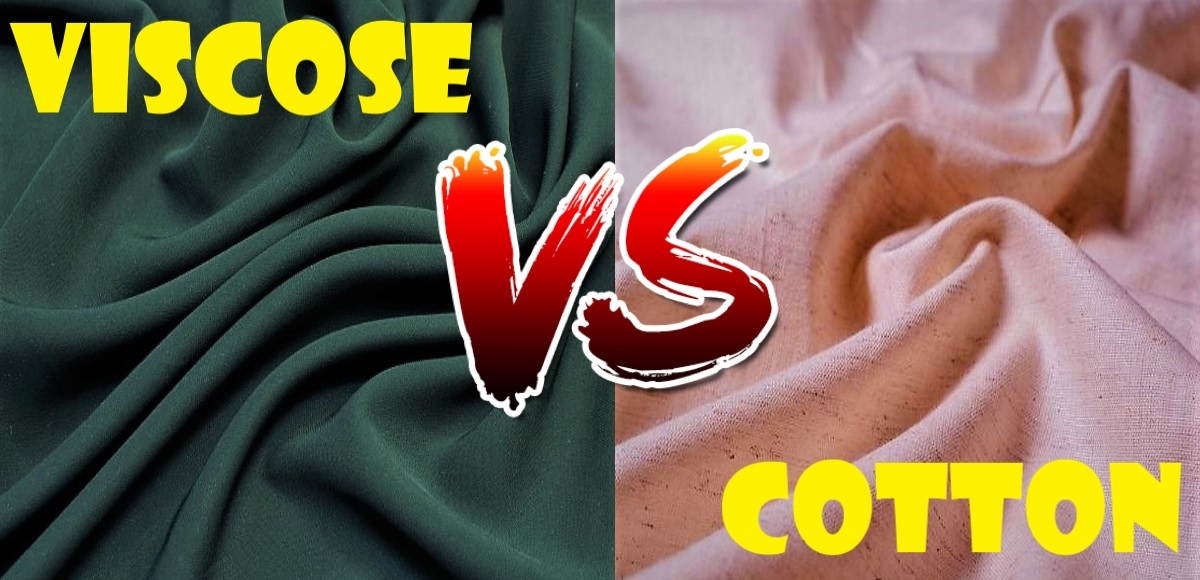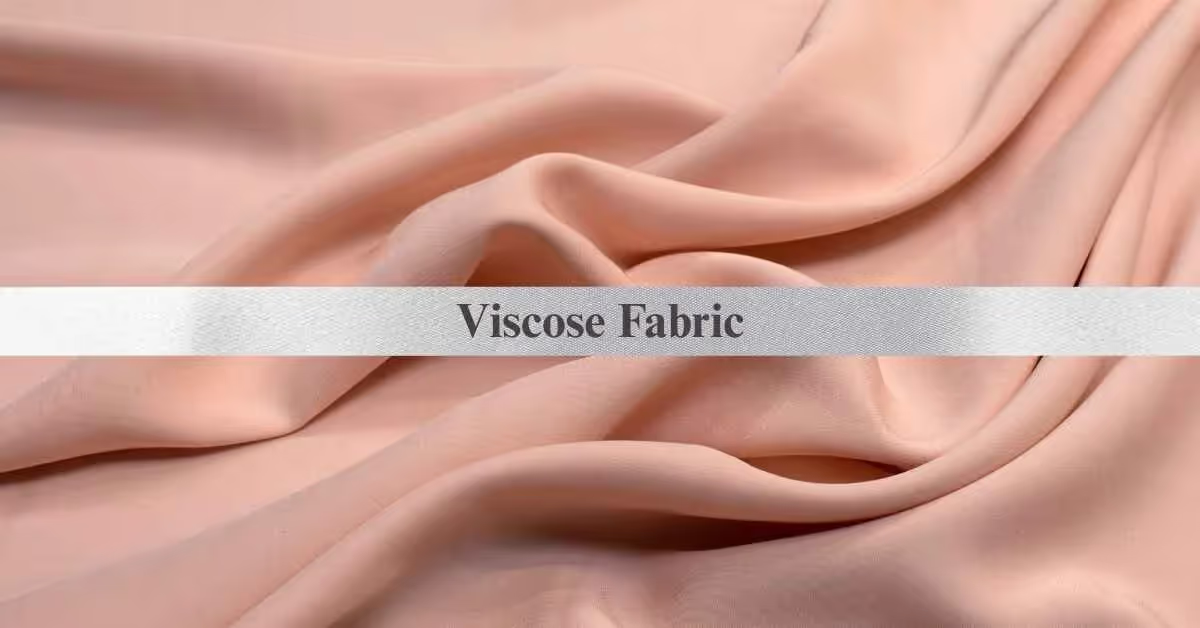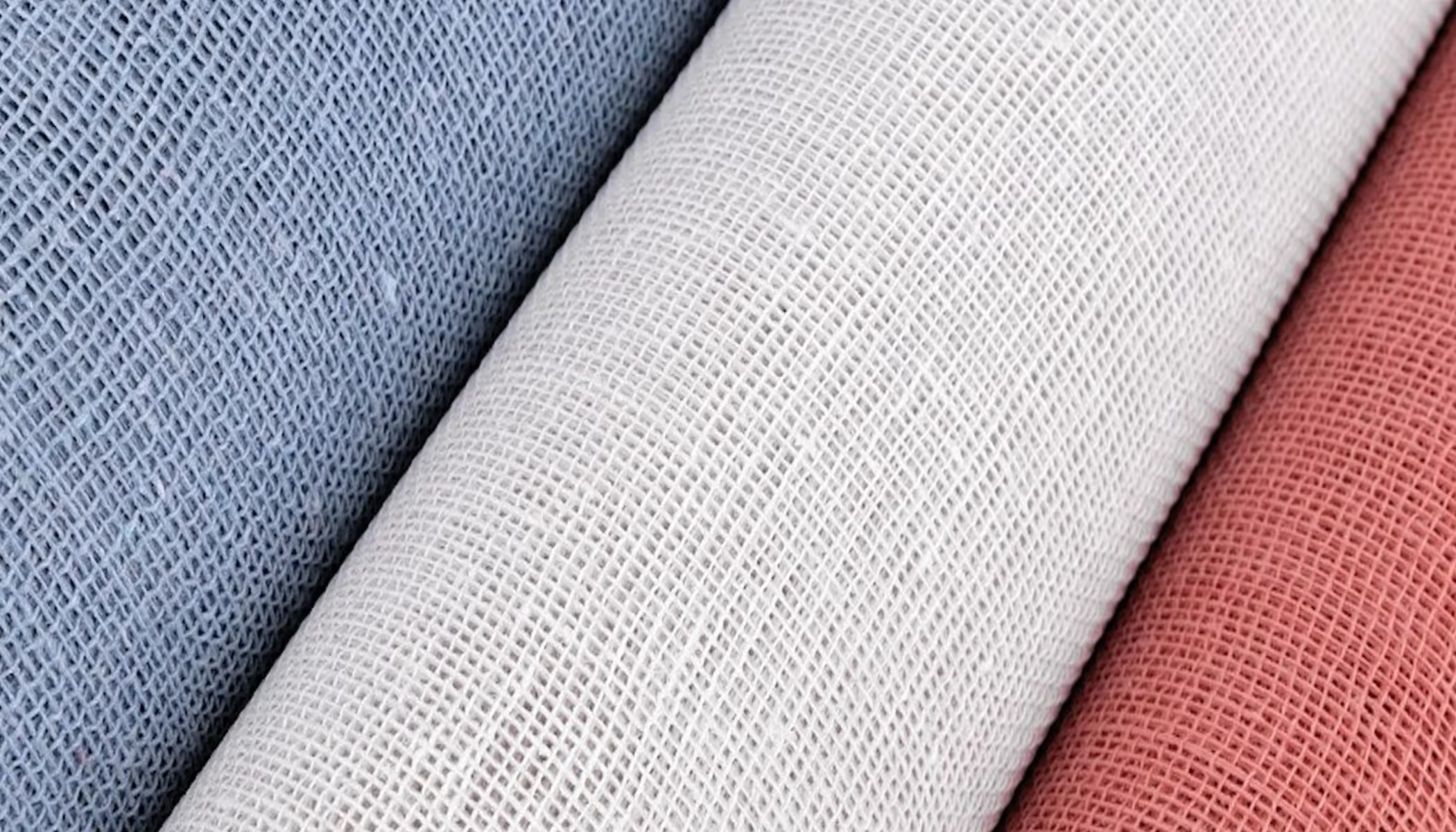Let’s be honest—most of us look at a clothing label, see words like “viscose” or “cotton,” and move on without a second thought. But the truth is, these two fabrics are wildly different in how they’re made, how they feel, and how they impact the planet.
So if you’ve ever wondered why one shirt feels buttery soft while another stiffens after a few washes, or why your breezy summer dress says “100% viscose” and not cotton, you’re not alone.
In this guide, we’re diving deep into the viscose vs cotton debate—not in a technical, boring way, but with clarity and real-life comparisons. From comfort and breathability to sustainability and longevity, we’ll help you figure out which fabric fits your lifestyle better.
By the end, you’ll know exactly what you’re wearing—and why it matters.
Viscose vs Cotton: Key Differences at a Glance

Before we get into the deep dive, let’s lay it all out side by side. If you’re short on time or just want a quick comparison, this section will give you a crystal-clear snapshot of how these two fabrics stack up.
Think of it as your go-to cheat sheet the next time you’re shopping or scanning labels.
1. Feel and Texture
Viscose feels smooth, silky, and fluid—almost like luxury at a bargain.
Cotton is soft and breathable but has a more structured, matte finish.
2. Breathability and Comfort
Cotton wins in pure breathability, especially in hot weather.
Viscose is breathable too but tends to trap more heat in humid conditions.
3. Durability
Cotton holds up well over time, especially high-quality weaves.
Viscose can weaken when wet and loses shape faster if not cared for properly.
4. Moisture Absorption
Both absorb moisture well, but viscose tends to dry slower and can feel damp longer.
Cotton dries faster and stays cooler on the skin.
5. Wrinkle Resistance
Viscose drapes beautifully and resists wrinkles better.
Cotton creases easily and often needs ironing.
6. Price
Viscose is typically cheaper due to mass production.
Cotton—especially organic or high-thread count—can cost more.
7. Sustainability
Cotton has a reputation for being natural, but it’s water- and pesticide-heavy.
Viscose comes from plants but involves chemical-heavy processing—unless it’s eco-certified.
What Is Viscose? Understanding the Fabric Beyond the Label

Now that we’ve looked at the quick differences, let’s break things down. Viscose might sound mysterious—or even synthetic—but it actually starts with something surprisingly natural: wood pulp. Here’s what you need to know before you judge it by its silky cover.
How Viscose Is Made (From Wood Pulp to Fabric)
Viscose is a semi-synthetic fabric, which means it begins with a natural base—usually wood from trees like beech, eucalyptus, or bamboo—but it’s turned into fabric through a chemical-heavy process.
The wood pulp is treated with chemicals like sodium hydroxide and carbon disulfide, dissolved into a thick liquid, and then forced through spinnerets (imagine a pasta maker) to form fibers. Once spun, the fibers are washed, dried, and woven into soft fabric.
It’s this transformation that gives viscose its signature drape and silk-like feel. But while the base is plant-based, the chemical processing means it’s not as eco-clean as it sounds—unless it’s made using newer, closed-loop systems like TENCEL™.
Where Viscose Excels (And Where It Doesn’t)
Viscose is incredibly soft, lightweight, and fluid. That’s why it’s a favorite in flowy dresses, blouses, and even linings—it hangs beautifully and feels luxurious without the luxury price tag.
But it comes with trade-offs. Viscose loses strength when wet, making it prone to sagging or tearing if you’re not careful with laundry. It can also shrink and wrinkle if you toss it in the dryer, which is why care labels often say “hand wash only.”
So, viscose feels amazing—but it’s not a low-maintenance partner.
What Is Cotton? The Timeless, Natural Staple

While viscose has that fluid, silk-like charm, cotton is the familiar favorite. It’s probably the first fabric you ever wore, and chances are, it still makes up a big part of your wardrobe. But there’s more to cotton than just being “natural.”
Let’s peel back the layers and understand what really makes cotton the global go-to.
The Cotton Lifecycle (From Farm to Fabric)
Cotton is a natural fiber that comes from the fluffy seed hair of the cotton plant. Once harvested, the cotton goes through ginning (removing the seeds), then it's spun into yarn and woven or knitted into fabric.
There are many types of cotton—Egyptian, Pima, upland, organic, and even recycled. Each type has its own texture and strength. For example, Egyptian cotton has extra-long fibers, which make it super smooth and durable.
Organic cotton skips the harmful pesticides and uses less water, while recycled cotton gives old garments a second life. But conventional cotton? It’s resource-hungry, requiring lots of water and chemicals to grow.
Benefits and Limitations of Cotton
Cotton is breathable, hypoallergenic, and ideal for hot climates. It’s soft enough for sensitive skin and absorbent enough to keep you cool. That’s why it’s used in everything from T-shirts and jeans to bedsheets and baby clothes.
However, it’s not perfect. Cotton wrinkles easily, can shrink in the wash, and may lose shape over time. And unless it’s organic, growing it can take a heavy toll on the environment.
So while cotton feels natural and familiar, not all cotton is created equal—and the quality can vary wildly.
Performance Comparison: Viscose vs Cotton in Everyday Use
Now that you know what these fabrics are and how they're made, let’s talk about how they actually perform. Because when it comes down to it, what matters most is how a fabric feels, moves, and holds up in real life—not just on the label.
Whether you’re dressing for a hot day or wondering which shirt will survive laundry day, here’s how viscose and cotton stack up.
Which Fabric Is Better for Hot Weather or Sensitive Skin?
If you’re sweating it out in the summer, cotton is the safer bet. It’s naturally breathable and helps your skin stay cool and dry. The fibers allow airflow and absorb moisture without clinging to your body.
Viscose is breathable too, but not quite as efficient in extreme heat. It has a soft, smooth surface that can feel amazing on the skin, but it tends to hold onto moisture longer—making it feel clingy or damp in humid conditions.
For sensitive skin, both fabrics are gentle, but cotton—especially organic—has fewer chemical residues. Viscose can sometimes cause irritation if it’s not processed well or if you’re allergic to certain dyes.
Comfort and Fit: Feel, Drape, and Stretch Differences
Viscose feels buttery smooth and drapes beautifully. It gives that fluid, flowy look you’ll find in dresses and skirts. It doesn’t cling awkwardly or feel bulky, which is why it’s so popular in fashion-forward pieces.
Cotton, on the other hand, is a bit more structured. It doesn’t drape as dramatically, but it offers a comfortable, familiar softness—great for casual wear like T-shirts, pajamas, and bedsheets.
Neither fabric has much natural stretch unless blended with elastane or spandex. But viscose wins in drape, while cotton wins in comfort for more fitted, everyday garments.
Washing, Care, and Durability
Here’s where the gap widens.
Cotton is generally low-maintenance. You can machine wash it, tumble dry it, and go about your life—though it may shrink or wrinkle if you're not careful. Still, it handles wear and tear pretty well, especially thicker weaves like denim or twill.
Viscose requires a gentler hand. It weakens when wet and can tear or lose shape if machine washed. You’ll often see care tags recommending cold water, hand washing, or line drying. And it definitely hates the dryer.
So if you’re looking for something you can throw in the wash without a second thought, cotton’s your friend. If you’re okay with a little extra care in exchange for luxury feel, viscose is worth it—just don’t forget to baby it.
Sustainability of Viscose vs Cotton: Which Is Truly Greener?
If you’ve ever picked up a viscose dress and thought, “Wait, this is made from wood pulp—so it must be sustainable, right?”... you’re not alone. And if you assumed cotton is eco-friendly just because it’s natural, that’s a fair guess too.
But the truth? Sustainability isn't black and white. It lives in the details.
Environmental Impact of Cotton Production
Cotton may be natural, but traditional cotton farming is one of the thirstiest industries in the world. Producing just one T-shirt can use over 2,500 liters of water—and that’s before you even wear it.
Worse, conventional cotton relies heavily on pesticides and fertilizers that can damage soil and contaminate water systems. This has serious effects on both the environment and the health of farming communities.
The silver lining? Organic cotton changes the game. It uses non-GMO seeds, avoids synthetic chemicals, and typically uses far less water. But it’s also more expensive—and not always easy to verify unless it’s certified by something like GOTS (Global Organic Textile Standard).
Environmental Concerns Around Viscose
Viscose comes from plants, yes—but not all viscose is innocent. Most of it starts with trees, and that means deforestation is a real problem, especially when producers source wood from ancient or endangered forests.
Even worse, the standard viscose production process uses carbon disulfide, a toxic chemical that’s harmful to workers and the environment. Wastewater from these factories often gets dumped untreated into rivers in countries with loose regulations.
That said, not all viscose is dirty. Brands that use FSC-certified wood and closed-loop systems—like Lenzing’s TENCEL™—recycle nearly all chemicals and water, making viscose far more sustainable than it used to be.
Eco-Friendly Alternatives and Certifications
When shopping, keep an eye out for these certifications:
- For cotton: GOTS, OEKO-TEX, Better Cotton Initiative
- For viscose: FSC (Forest Stewardship Council), CanopyStyle, and Lenzing EcoVero
Want to be an eco-smart shopper? Avoid generic viscose unless it clearly mentions sustainable sourcing. Same goes for cotton—"100% cotton" on a tag means nothing if it’s not backed by a trusted certifier.
So which is greener? The answer is: it depends. Choose organic cotton or closed-loop viscose, and you’re on the right track. Anything else? Proceed with caution.
Best Use Cases: When to Choose Viscose or Cotton
So, you know how they’re made, how they feel, and how green (or not) they really are. But let’s bring it down to something even more useful: when should you actually choose viscose or cotton?
Because the truth is, both have their moments to shine—it just depends on what you need.
Clothing Types and Style Preferences
If you love a flowy dress that moves with you, viscose is probably your best friend. It drapes effortlessly, feels light on the skin, and adds a soft, elevated vibe to casual or formal looks. That’s why it’s everywhere in blouses, maxi skirts, and those elegant trousers that look like silk but cost way less.
Cotton, however, is the go-to for structure and comfort. Need a reliable T-shirt? A breathable pair of pajamas? A button-down that gets softer with every wash? Cotton’s your guy. It holds its shape, feels familiar, and works across casual and everyday basics.
When it comes to athletic wear or stretchy items, neither cotton nor viscose really cuts it alone—you’ll often find them blended with elastane to get that extra give.
Bedding, Home Textiles, and Beyond
For your home, cotton takes the lead. It’s durable, washable, and perfect for bedsheets, pillowcases, curtains, and bath towels. Organic cotton bedding, especially, is a dream for people with allergies or sensitive skin.
Viscose sneaks into home textiles too, mostly where drape and softness matter—like in decorative pillow covers, silky duvet covers, or smooth-lined curtains.
But be cautious: viscose can yellow with repeated washing and doesn’t love heat, so it’s not the best for heavy-use home items like towels or everyday sheets.
Viscose-Cotton Blends: Getting the Best of Both
Here’s where things get interesting: blended fabrics.
Viscose-cotton blends combine the best of both worlds—cotton’s durability with viscose’s softness and drape. These blends are common in tees, dresses, and loungewear where brands want softness without sacrificing breathability or washability.
They’re usually more wrinkle-resistant than pure cotton and more affordable than pure viscose garments that require delicate care.
If you're standing in a fitting room stuck between two options, check the tag. A 50/50 viscose-cotton blend could give you both comfort and style—without the drawbacks of either fabric on its own.
Final Verdict: Should You Choose Viscose or Cotton?
Choosing between viscose and cotton isn’t about picking a “better” fabric—it’s about picking the right one for what you need.
If you want something soft, silky, and drapey for a night out or a breezy summer look, viscose is a winner. Just be ready to treat it with a bit more care when it comes to washing and drying.
If you’re looking for comfort, breathability, and durability you can rely on every day, cotton is your solid staple. Bonus points if you go for organic or recycled options to reduce your impact on the planet.
And if you're ever in doubt? Try a blend. It’s the easiest way to get the best of both without the guesswork.
At the end of the day, what you wear should feel good on your skin and align with your values. Now that you understand the difference between viscose and cotton—you can shop smarter, dress better, and feel more confident doing both.

















%20to%20Boost%20Your%20Own%20Sale_.avif)




